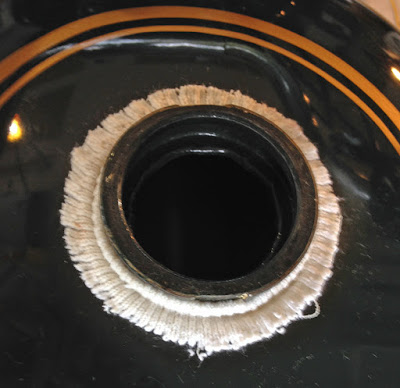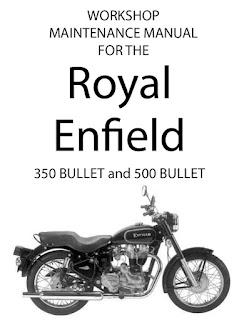 |
| Beno Rodi and Royal Enfield in Kaplan America video. |
Longtime Royal Enfield racer Beno Rodi speaks in a recent YouTube video about his fondness for Royal Enfields and the vast collection of British motorcycles and parts he has stored in a warehouse in Georgia.
In the Kaplan America video interview with Rodi he shows off the Royal Enfield 350 motorcycle he has campaigned for 60 seasons. (The YouTube video is no longer viewable.)
"This is the one I rode the '61 Alligator and Stone Mountain enduro on... My dad went along with me because I was just 14. Well, to begin with, it was something I had built, so I think the front fender fell off first, and then the exhaust pipe fell off and then the back fender fell off.
"It was pretty much wore out by the time I got through." As battered and rebuilt as it is, he said he planned to take it racing in the brakeless dinosaur class that weekend.
His father Al Rodi ran Al Rodi'sMotorcycles, the dealer for greater Atlanta in the 1940s, according to Royal-Enfield.net
"Over the next 20 years Al Rodi operated various shops around Atlanta devoted to everything from AJS to Zundapp, but focused on the English marques including Royal Enfield and re-badged 'Indian-Enfields,'" Royal-Enfield.net says.
British bikes and parts went into storage as Japanese motorcycles replaced them on showroom floors.
 |
| Royal Enfield and other British makes on dealership sign in Rodi warehouse. |
"Today, Al Rodi's son Beno has taken all of the former inventory from British bike shops collected over the course of many years where they now reside in a warehouse near Winder, Ga. outside Atlanta," the website says.
"He is involved in a variety of restoration projects as well as historical racers. Beno has himself been involved in motorcycle racing since the 1960s and currently campaigns a selection of Royal Enfield Bullets in flat track, road racing and trials events."
 |
| No racing Royal Enfield this; it's a ladies model of the 1920s. |
Beno Rodi was one of the founders of the American Historic Racing Motorcycle Association (AHRMA) and ran a motorcycle dealership that handled BSA, Triumph, Norton, Moto Guzzi, Ducati and BMW. That became a parts and salvage business, while he raced under the banner of what he called "Team Salvage, because I was riding my old junk (and winning races)."
Rodi bears the scars of racing, the video interviewer notes, in a body battered by injuries. He uses a starting rig to avoid having to kick start his motorcycles.
 |
| Backing Royal Enfield 350 onto starting rollers. |
Even watching him maneuver his Royal Enfield 350 onto the rig looks painful. It's easy to respect someone who goes to such lengths to stay in his game.
The lengthy (and slow paced) video concentrates on the size and variety of Rodi's collection of parts and motorcycles. His interests extend far beyond Royal Enfields to BSAs, Nortons, AJS, Matchless and on.
But it's easy to spot Royal Enfields on the video tour around the warehouse.




































